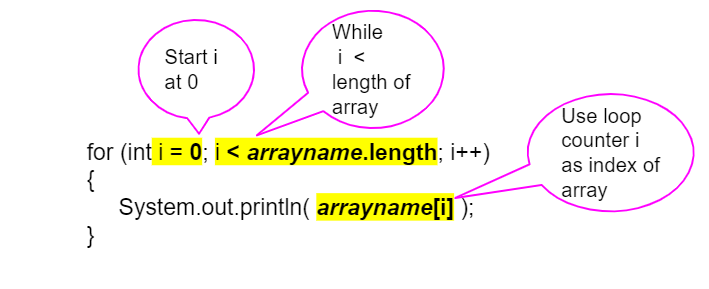Tackle Scholar's Mate: Punish in 2 Moves! A Guide to Counter Queen Attacks - Remote Chess Academy
Por um escritor misterioso
Descrição
In the game of chess, the Fool’s Mate opening can catch beginners off guard and lead to a quick defeat. But there’s no need to despair! By mastering a few simple moves, you can effectively defend against this risky strategy and put yourself in a strong position to win the game. In this article, we will guide you through the steps to counter the Fool’s Mate and thwart your opponent’s unsound queen attack. With a bit of strategy and foresight, you can not only discourage your opponent from playing this opening, but also come out victorious. So, let’s explore the tactics and equip you with the skills to outmaneuver your opponent. One of the most annoying openings you’re ever going to face in chess is the so-called “Fool’s Mate.” Today, I’d love to share with you how you can defeat it in only two moves and get a completely winning position against your opponent’s most probable moves. This early queen attack arises after the moves: 1.e4 e5 2. Bc4 There are different ways for White to go about this, but one of the trendy ways is to develop the light-square bishop first to c4 (2.Bc4) 2…Nc6 3. Qf3 They can then try to pull off this trick and either play their 3.Qh5, trying to checkmate you that way, or, which is more trendy, play 3.Qf3. Their hope is still the same: they hope that if you play any casual moves, such as 3…Bc5, as you do in the Italian Game, then they can literally checkmate you in one move by 4. Qxf7#. We don’t want to just defend with 3…Nf6. So, White will develop like it is a normal game. But that’s what we don’t want because we want to discourage them from playing this weird opening. Let me show you the right way once. Aggressive Way to Defend 3… f5 After White has played 3.Qf3, creating a checkmate threat, you’re going to respond with a paradoxical move: 3… f5. And what I especially love about this is that it reminds me of my favorite Rousseau Gambit. I hope you’ve watched that VIDEO. It’s a very powerful Gambit for Black in general, but here we’re using it against the Scholar’s Checkmate, which is something really creative. Now, at first, it seems like a completely bad move because what you wanted to do was capture this pawn anyway, and now you’re giving it up. It looks like you’ve just been panicking and didn’t know what to do, so you decided to prevent the checkmate and played 3…f5. The Most Common Move 4.Qxf5 Most of your opponents here would be tempted to capture the pawn with the queen, so they happily grab the pawn. Now they’re a pawn up and still threatening Qxf7, checkmate. So, they are absolutely happy. 4…d5 And here comes the big upset: you play 4…d5. And, guess what? It’s time for White to resign. In fact, that was a pretty clever trap and certainly unexpected by White. You open up this bishop to attack the queen, but also simultaneously attack the bishop. And why can’t I hold down to both of their pieces? So, you’re going to capture at least one of them. Moreover, most of your opponents are so possessed by that checkmating idea that in this position, the most common move of White is (you wouldn’t believe) 5. Bxd5. They still hope to deliver that Scholar’s Checkmate, completely overlooking that now you can just win the queen in one move, and the game is over. I find it very satisfying to finish the game that way against somebody who tried this chess bullying against you. And you can turn that around in just two moves. And now it’s time for White to resign. Actually, there was no way for White to get out of this. Pawn Captures If you’re playing against a more advanced opponent, they may figure out that 4. Qxf5 is a losing move, even though it’s the most common move played by far. But what if your opponent captures your pawn with their own pawn? In that case, there’s a simple way to gain the upper hand. Let’s see how to handle 4.exf5 You can see that you’ve completely refuted White’s idea. The queen had to move back and forth and it’s currently all the way back to its original square. The bishop had to go back and, if you ever want to, you can just capture it. You completely dominate the center of the board and have the upper hand in development. You’re going to play something like Bc5, castle, and start your middle game attack. For White, it’s going to take a lot longer to finish their development. So, that’s how you completely refute the checkmate idea of White early in the game. Conclusion The Fool’s Mate opening in chess can be a risky strategy that can catch beginners off guard and lead to a quick defeat. However, with the right tactics and foresight, you can defend against this opening and put yourself in a strong position to win the game. We saw how to counter the Fool’s Mate in just two moves by responding to the early Queen attack with the f5 move, which creates a trap that can lead to a winning position for Black. Additionally, the article demonstrated how to handle other possible responses from White and gain the upper hand in development. With these strategies, players can discourage opponents from using the Fool’s Mate opening and enjoy a more balanced and rewarding game of chess. If you’ve enjoyed reading this article and want to see the concepts discussed in action. We have created a video lesson that covers the same material in a more visual and interactive way. Below, you can find the games shown in the video:

checkmate Archives - Remote Chess Academy

Natural sciences and chess: A romantic relationship missing from

Chess and Mathematical thinking Cognitive, Epistemological and

How To Brutally PUNISH Scholar's Mate & Early Queen Attacks

How to Checkmate in 4 Moves (Scholar's Mate) - Beginner to Chess

How To Brutally PUNISH Scholar's Mate & Early Queen Attacks

How To PUNISH Early Queen Attacks & Scholar's Mate, chess

How to Checkmate in 4 Moves (Scholar's Mate) - Beginner to Chess

Videos - Internet Chess Club

Punish The scholar's mate & early queen attack in 2 minutes

unSILOed with Greg LaBlanc

How To PUNISH Scholar's Mate

How To Brutally PUNISH Scholar's Mate & Early Queen Attacks

6.2. Traversing Arrays with For Loops — AP CSAwesome
de
por adulto (o preço varia de acordo com o tamanho do grupo)







